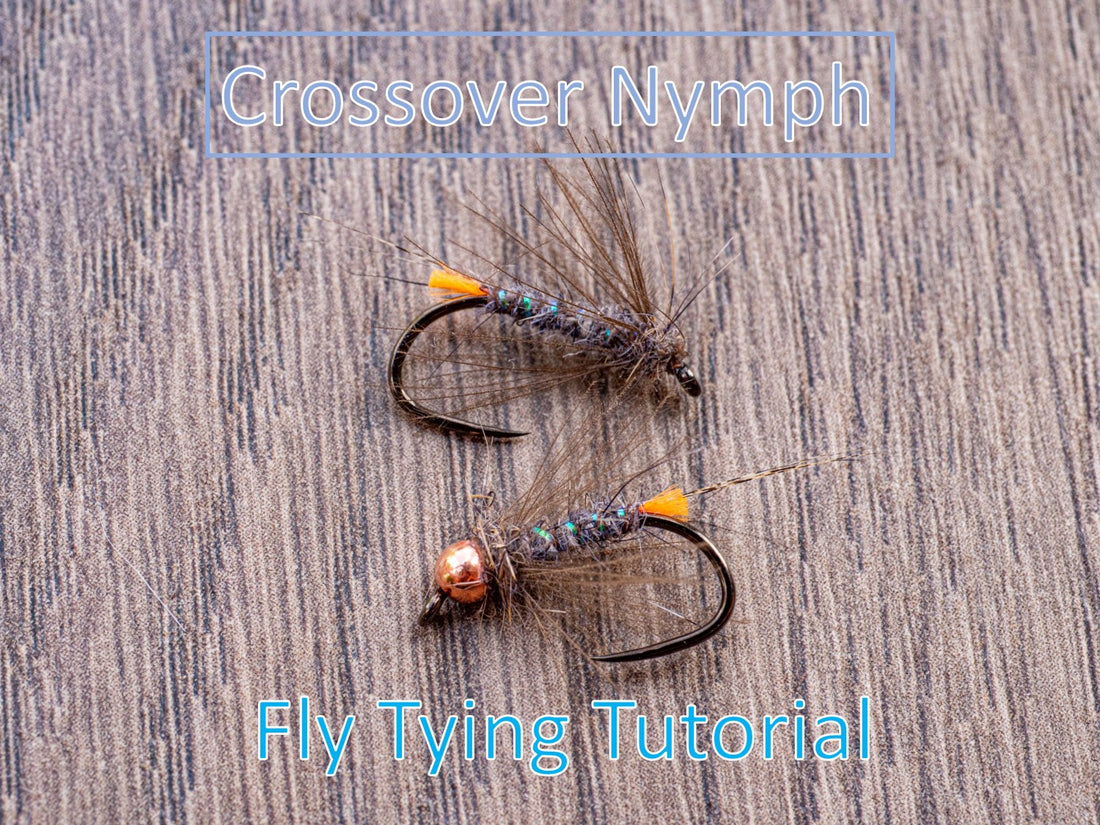
Crossover Nymph (Hare's Ear Blowtorch) Fly Tying Tutorial
Share
During last year's National Fly Fishing Championship (2018) in Bend, OR, callibaetis mayflies were a prominent hatch we needed to be prepared for at several of the lakes. I had been playing around with several types of callibaetis nymphs prior to the championship. One nymph in particular had been successful in my practice and became my first choice for deployment when needed during the session. That nymph became what I now refer to as the Crossover Nymph.
During the final session I started fishing with several bugger/leech variations which had been successful for my teammates on Big Lava Lake in prior sessions. I did well but noticed a marked slowdown in catch rate about an hour into the session. At the same time fish started rising and swirling in the shallows near the reeds and weed patches. Upon closer inspection there were callibaetis duns beginning to emerge and the fish had taken notice.

I switched lines and fly patterns and ended up with two crossover nymphs on my point and middle dropper and a bushier wet fly on the top dropper to call attention to my rig. The final two hours of the session saw some of the most explosive fishing I've seen during a callibaetis hatch. I ended up winning the session, only beating my boat partner Brian Kelso by one fish in a nail biter where I caught my last fish with about 30 seconds to go. The Crossover Nymph did pretty much all the damage during the latter part of my session and has continued to be a producer on lakes for me since.
The great thing about this nymph though is that it is just as effective on rivers as it is on lakes, which is why I call it the Crossover Nymph (no it can't help you with a sick Allen Iverson style crossover on the basketball court). Lately I've experienced regular success with it on my home rivers, especially in the morning as an attractor nymph before small mayflies start to hatch in the afternoon. The tag under the tail provides a trigger to set it apart from the other items in the drift and the CDC hackle produces movement that suggests life. It's a simple combined recipe for success. (Note: this fly without the CDL in the tail has become what I call a Hare's Ear Blowtorch)
Speaking of the recipe, here it is:
Hook: Fasna 210, Dohiku 302, Hanak 230, or Hanak 200, or the Orientsun 7224.
Bead: Copper Tactical Fly Fisher Slotted Tungsten Bead (can omit for the lake version).
Thread: Tan 16/0 Veevus
Tail: TFF Coq de Leon or Fasna Coq de Leon
Rib: Sulky Opalescent/Pearl tinsel
Counter-rib: Brown 12/0 Semperfli nano silk. No need for the spun dubbing loop in the video with this thread. You can just counter rib the Sulky with it.
Abdomen: Natural Fasna Scruffy dub, Natural Troutline Mad Rabbit, or Hareline Hare's Ear.
Hackle: CDC in a natural brown or gray color from Troutline, Fulling Mill, 54 Dean Street.
Thorax: The same dubbing as the or Troutline Argentinian Hare #9
Tools Used:
